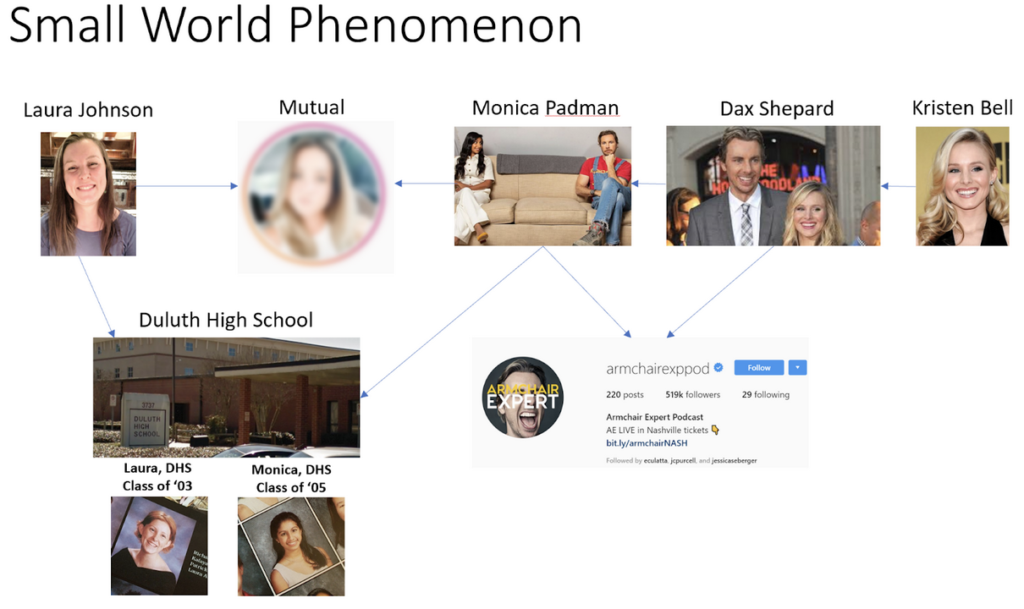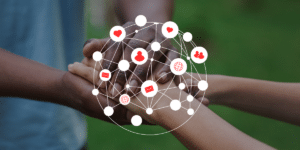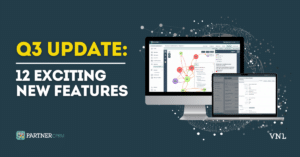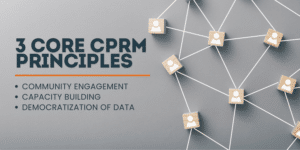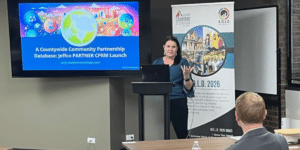It’s a Small World, Kristen Bell: The Invisible Networks Linking Us All
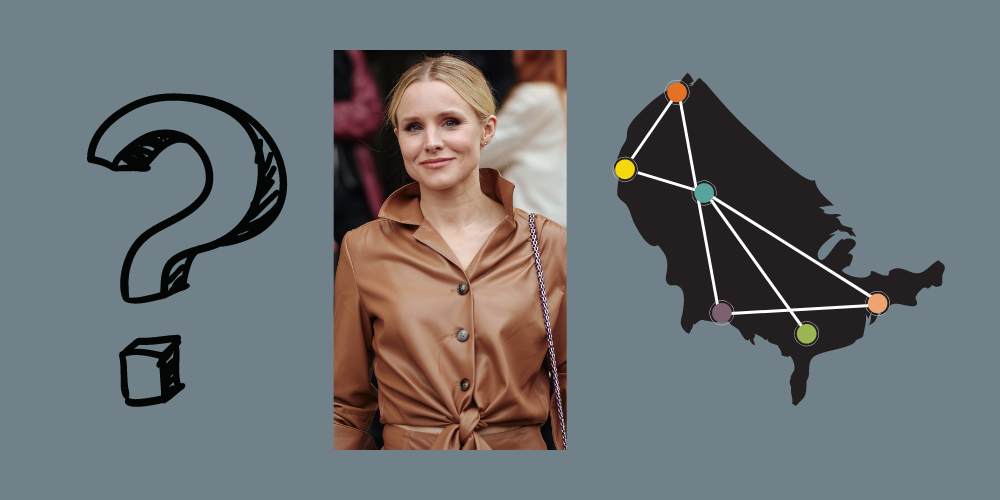
- Laura Johnson
- No Comments
Kristen Bell is an award-winning actress known for her roles in The Good Place, Frozen, and Veronica Mars. She doesn’t know this, but she’s a perfect illustration of the visible and invisible connections that link us all.
To be clear, I don’t know Kristen Bell. But if I wanted to reach out to her, how would I do that? I could try social media, but I’d immediately be lost in the crowd of fans and surely she’d just ignore me if she even saw my message at all. I could try to find her out and about in public, but I’d probably get decked by security. There’s got to be a better way! Maybe if a friend of a friend could connect us…
Speaking of which, have you ever been talking with a new acquaintance in casual conversation when you discover strange coincidences that seem to shrink our enormous world into what feels like a small town?
This has happened to me many times, including this past week. I was at a friend’s birthday party and he introduced me to one of his friends whom I had not met before.
We got to chit-chatting, discussing where we’re from (metro D.C. for him and metro Atlanta for me) and what we do (nonprofit consulting for him, Visible Network Labs for me). As an offhand remark, I mentioned having previously lived in an Atlanta neighborhood called Little Five Points. “Oh, really?” he said, “Whereabouts?” From the way he asked, I wondered if he had also lived in that neighborhood. “Oh just a grimy old building called The Oaks,” I said.
At this point he looked shocked and just began laughing in disbelief. As it turned out, he and his wife had also lived in The Oaks.
After one more round back and forth, we determined that we had lived in the same building at the same time, but had never met. Wow, what a small world! In a few minutes, Atlanta had shrunk from a city of 400,000 to a neighborhood of 20,000 to a single apartment building with 12 units–with two of the former tenants meeting for the first time more than a decade later at a birthday party of a mutual friend.
Social scientists had long been familiar with this ‘Small World Phenomenon’ and in the 1960s, two psychologists set out to discover how interconnected we really are.
In a series of cleverly designed studies, psychologists Jeffrey Tavers and Stanley Milgram wanted to see if a randomly chosen individual (the ‘starter’) could successfully send a letter to another random individual (the ‘target’). If the starter person knew the target person, they could directly mail them the letter. However, if they didn’t know the target, they were not allowed to look up the target person and they could only mail it to someone who they thought would have a better chance of knowing the target.
In short, this study was attempting to understand if the starter could successfully send the target a letter via a series of intermediaries and if so, how many steps would it take to reach the target?
In the instructions, the target was identified by name–he was a stockbroker located in Boston, Massachusetts. Starters were either members of the general population in Nebraska, stockbrokers in Nebraska, and the general population in Boston. These groups were chosen to understand how geography and professional networks may hinder and/or aid reaching the target. Surprisingly, 29% of starter letters reached the target person and for the completed chains, there were an average of five intermediaries between the starter and the target.
Wow, what a small world!
What’s amazing is that this is based on people’s visible networks–individuals sent the letters to their acquaintances who they thought would know the target. As the authors note, there are probably more efficient paths that we’re not always aware of. In other words, there are both invisible and visible networks that connect us all together.
This brings me back to Kristen Bell. She’s married to actor and podcaster Dax Shepard who co-hosts Armchair Expert with his producer and co-host Monica Padman.
On one episode, Monica mentioned being from the Atlanta area and my ears perked up–just like what happened with the friend and a friend when I mentioned Little Five Points. But Atlanta is a big place (population: 400,000+) and metro-Atlanta is an even bigger place (population: 5 million+) so I didn’t make much of it until a subsequent episode where she mentioned growing up in Duluth, Georgia.
I also grew up in Duluth, Georgia!
But here again, there are several high schools in Duluth and I wasn’t sure how close in age we were. Nevertheless, I dug out my yearbook, checked the index, and there she was: Padman, Monica. As it turns out, Monica Padman was a sophomore during my senior year. I was getting a lot closer to linking myself to Kristen Bell but not quite yet since I didn’t know Monica personally. So like any determined investigator, I went to social media to scope out Monica’s online connections and see if we knew any of the same people.
As it turned out, we did!
One of my Instagram followers (who sat next to me in high school Spanish) was also followed by Monica. Success! I completed my acquaintance chain and located a path between myself and Kristen Bell. It only took 3 intermediaries to link us! Wow, what a small world!
To be clear, there’s nothing special about Kristen Bell, or me, or the friend of a friend who turned out to be my old neighbor. Visible and invisible networks link us all together in complex ways and it can be shocking and exciting when these networks are revealed to us.
Interested in visualizing your network?
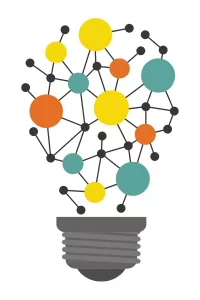
We work closely with innovative organizations around the globe using our PARTNER CPRM platform to help them map, track, and visualize their network, reach, and impact. PARTNER CPRM analyzes your data, identifying gaps and opportunities for more effective collaboration. With numerous report options and the ability to export network maps and visible network profiles, you can easily share your results with partners and the community to make the most of your data.
At the personal level, our PARTNERme platform utilizes social network analysis to take a person-centered approach to mapping an individual’s social support network. It then identifies their most pressing need with the least amount of support, and links them to helpful resources in the community to improve their health and quality of life.
Reach out to us here to schedule a demonstration on how the Visible Network Labs team can help you uncover insights in your work.
Be sure to stay tuned to our Visible Us Blog for more product updates and VNL Team content!
About the Author: Laura Johnson
Laura Johnson is a public health researcher with expertise in network science and the social and behavioral aspects of health. She is finishing her PhD in Public Health from the University of Nevada, Reno. While there, Laura has used complex quantitative analysis to explore the ways in which interpersonal social networks can have implications for women at-risk of HIV, such as their attitudes about medical mistrust, their thoughts on HIV prevention, or who they can turn to for health advice.
Prior to pursuing a PhD, Laura worked for 8 years in various academic, public-sector, and private-sector settings conducting quantitative and qualitative research to address a range of important social issues. Laura’s own personal networks have resulted in learning about job opportunities, adopting a dog, and meeting her spouse, among other transformational life experiences.


